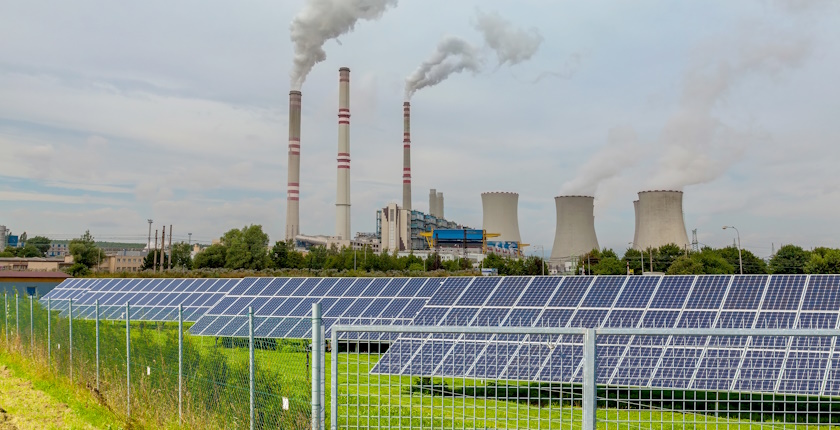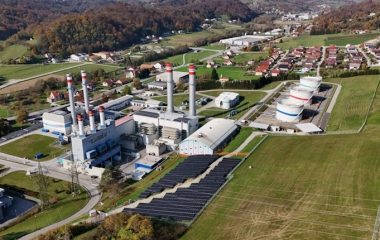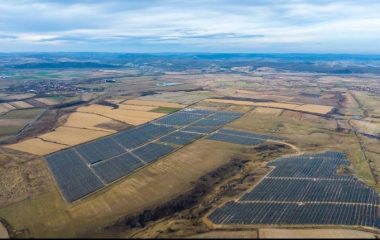
Photo: iStock
Energy Community contracting parties showed a tendency this year toward steady transposition and implementation of European law, the international organization’s secretariat said in an annual report. Still, it reiterated that the countries of the region can’t get exemptions from CBAM for electricity without market coupling with the EU. Additionally and with regard to the EU’s upcoming CO2 border tax as well, the secretariat suggested that investing in pollution reduction equipment in large combustion plants (mostly coal plants) isn’t financially viable.
In its Annual Implementation Report 2024, the Energy Community Secretariat highlighted the link between achieving adopted goals and the European Union’s financial support for the contracting parties through the New Growth Plan for the Western Balkans and the Ukraine Facility. The reforms in question include the energy market, decarbonization, renewables deployment and energy efficiency.
“Overall, the implementation performance across the Energy Community appears stable. Considering the growing scope of the acquis, the slight implementation decline indicates a tendency toward steady transposition and implementation,” said Energy Community Secretariat Director Artur Lorkowski. Complying with the legal framework builds an integrated regional energy market aligning with the EU, the document notes.
Failure to align with EIP sharply cuts electricity indicator
The assessment is now centered on the transposition of the Energy Integration Package (EIP). Focus is also on strategic energy infrastructure, particularly the investments within the relaunched list of Projects of Energy Community Interest (PECI), and decarbonization and carbon pricing mechanisms.
Progress in establishing domestic markets, increasing competition, and providing consumer protection is evident, yet fully compliant transposition of the EIP that enables market coupling with the EU remains an ongoing effort, the report revealed.
Not a single contracting party is on track to achieve an exemption from CBAM for electricity before payments are introduced
Without the full transposition of the package, the goal of market integration in the form of market coupling cannot be reached, the secretariat warned. Furthermore, exemption from payments for electricity that are starting in 2026 under the EU’s Carbon Border Adjustment Mechanism (CBAM) implies market coupling. The levy is scheduled to be introduced for electricity imported from the Energy Community and other third countries into the EU, including transit. No contracting party is on track to achieve it in time.
Actually, they were all downgraded in the markets and integration segment for missing the deadline for EIP’s transposition. The average score is 45%, which is 15 percentage points less than one year before. Namely, the electricity component was slashed by 27.4 points to 43% while the result for gas jumped 14.8 points to 46%.
Energy Community scores 51% overall in implementation
The overall implementation performance is at 51%. Moldova tops the chart with 66%, followed by Serbia’s 55%. Bosnia and Herzegovina fares the worst again – just 30%.
Serbia has the best result in the subindex covering self-consumption and energy communities
Notably, the overall renewable energy tally surged 18.3 points to 58%. One especially strong average item is self-consumption and energy communities, 71%, thanks to new renewable energy laws across the region. On the other hand, the adoption of bylaws is mostly slow, delaying the introduction of energy communities.
Serbia has the highest rank, 88%, and all others have a 75% score except for Georgia and North Macedonia, both at 50%.
This year the secretariat introduced metrics on carbon pricing and emissions monitoring. Progress can also be tracked on its implementation performance page.
The Energy Community’s new emission trading scheme subindex, which covers monitoring, reporting, verification and accreditation (MRVA), started at 31%. The secretariat commended the intensification of efforts in the segment. The said climate indicator measures the advance toward the establishment of carbon pricing mechanisms.
CBAM poised to sink coal plants
Serbia, Georgia and Ukraine adopted their first national energy and climate plans (NECPs) this year, Albania and North Macedonia are updating theirs, while the rest haven’t finalized them. They are strategic documents urgently needed to guide progress toward 2030 targets and establish a strong foundation for significant energy sector investments, according to the report.
On that note, the secretariat suggested that it may not be financially viable anymore to install pollution reduction systems in large combustion plants, of which coal power plants are predominant in the Energy Community.
“Ensuring compliance of large combustion plants requires either investments in emission reduction or closure of the plants. The situation is aggravated by the fact that the technologies necessary to curb emissions (SO2 in particular) imply a reduction in plant efficiency due to an increase in self-consumption of the abatement units. This, in turn, increases the amount of greenhouse gas emissions relative to the electricity generated. The financial adjustment to be paid under CBAM is expected to restrict business and export opportunities even further, which should incentivise contracting parties and operators alike to review their business models,” the report reads.
The Energy Community extends the EU’s internal energy market to countries in its neighborhood. The principle objectives of the Energy Community are to create a regulatory and market framework capable of attracting investments for a stable and continuous energy supply. By signing the Energy Community Treaty, the contracting parties committed to implementing key EU energy legislation.


















Be the first one to comment on this article.